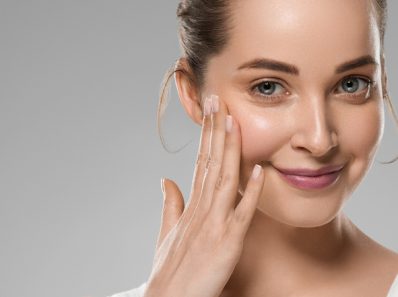The eyes, often referred to as the “windows to the soul,” play a pivotal role in our facial aesthetics. As we age, the skin around our eyes can sag, wrinkle, and develop bags, often making us look more tired or older than we feel. While the aging process is natural, the desire to retain a youthful and vibrant appearance remains strong for many. In the quest for rejuvenated eyes, two methods have gained popularity: Eyelid lifts, known medically as blepharoplasty, and targeted eye exercises. Both promise to counteract the signs of aging, but which is truly more effective? In this article, we’ll delve deep into the world of eyelid rejuvenation, comparing the surgical precision of eyelid lifts with the natural approach of eye exercises, helping you make an informed decision for your eye-enhancing journey.
Understanding Eyelid Lifts (Blepharoplasty)

Blepharoplasty, commonly known as an eyelid lift, is a surgical procedure designed to improve the appearance of the eyelids. Whether you’re dealing with droopy upper lids or puffy bags below your eyes, this procedure aims to rejuvenate the eye region, offering a fresher, more alert look.
What is Blepharoplasty and How Does It Work? Blepharoplasty involves removing excess skin, muscle, and sometimes fat from the upper and/or lower eyelids. The process begins with an incision along the natural crease of the eyelid, ensuring that any scars are well-hidden. Once the unwanted tissue is removed, the incisions are closed with sutures, leaving the eye area smoother and more defined.
Types of Eyelid Lifts:
- Upper Eyelid Surgery: Primarily targets sagging or drooping upper eyelids, which can sometimes impair vision if severe.
- Lower Eyelid Surgery: Focuses on removing excess skin and fat from the lower eyelid, addressing bags and wrinkles.
- Double Eyelid Surgery: Popular in some Asian countries, this procedure creates a crease in the upper eyelid, resulting in a “double eyelid” appearance.
Benefits of Eyelid Lifts:
- Immediate and Noticeable Results: Unlike non-surgical methods, the effects of blepharoplasty are visible soon after recovery.
- Long-lasting Effects: The results of an eyelid lift can last for years, making it a long-term solution for many.
- Addresses Both Skin and Fat: Beyond just tightening skin, blepharoplasty can also address fatty deposits, offering comprehensive rejuvenation.
Potential Risks and Recovery Time: Like all surgeries, blepharoplasty comes with its set of risks, including infection, scarring, or asymmetry. It’s crucial to follow post-operative care instructions and keep the area clean. Recovery time can vary, but most patients can return to their regular activities within 10 to 14 days, with some swelling or bruising in the interim.
In the next section, we’ll explore the world of eye exercises, offering a natural counterpoint to the surgical approach of blepharoplasty.
Delving into Eye Exercises

Eye exercises, often touted as a natural remedy for various eye-related concerns, have been practiced for years. These exercises aim to strengthen the muscles around the eyes, improve focus, and potentially reduce the appearance of aging. But how effective are they, especially when compared to surgical interventions?
The Concept Behind Eye Exercises: At the core of eye exercises is the belief that by regularly working the muscles surrounding the eyes, one can improve circulation, reduce strain, and maintain or even enhance the skin’s elasticity. Just as regular workouts can tone the body, proponents argue that eye exercises can tone the eye area.
Popular Eye Exercises and Their Techniques:
- Palming: Rub your hands together to generate warmth, then gently cup your eyes with your palms without applying pressure. This relaxes the eye muscles.
- Blinking Exercises: Intentionally blink every few seconds for two minutes to refresh the eyes and reduce strain.
- Focusing Exercises: Hold a pen at arm’s length and focus on its tip. Slowly bring it closer to your nose, keeping focus, then move it back out. Repeat several times.
- Eye Rolling: Look up, then slowly circle your eyes in a clockwise direction, followed by a counterclockwise direction.
Benefits of Eye Exercises:
- Non-invasive and Natural: No need for surgery or injections, making it a risk-free option for many.
- Flexibility: Can be done anywhere, anytime, without any special equipment.
- Potential Vision Benefits: Some believe that eye exercises can also help improve vision and reduce the need for glasses or contacts.
Limitations of Eye Exercises in Addressing Aging: While eye exercises offer several benefits, their effectiveness in reversing the signs of aging is still debated. They may help in reducing eye strain and improving muscle tone, but sagging skin, deep wrinkles, and fat deposits are beyond their scope.
In our next section, we’ll put these two methods head-to-head, comparing their effectiveness and suitability for rejuvenating aging eyes.
Comparing the Two: Effectiveness and Suitability
When it comes to rejuvenating the eyes, both eyelid lifts and eye exercises present compelling arguments. However, their effectiveness and suitability can vary based on individual needs, desired outcomes, and personal preferences. Let’s break down the comparison:
Immediate vs. Gradual Results:
- Eyelid Lifts: Offer almost immediate results. Once the swelling and bruising subside post-surgery, the rejuvenated appearance of the eyes is evident. The transformation is often dramatic, especially for those with significant sagging or puffiness.
- Eye Exercises: Results are more gradual and subtle. Regular practice over weeks or months might lead to improved muscle tone and reduced eye strain, but significant cosmetic changes are less likely.
Invasiveness vs. Non-Invasiveness:
- Eyelid Lifts: Being a surgical procedure, blepharoplasty is invasive. It involves incisions, removal of tissue, and a recovery period.
- Eye Exercises: Completely non-invasive. They involve simple movements and relaxation techniques without any risk of surgical complications.
Cost Implications:
- Eyelid Lifts: Surgery comes with associated costs, including surgeon’s fees, facility fees, anesthesia, and post-operative care. Insurance may not cover cosmetic procedures.
- Eye Exercises: Virtually cost-free. While there are programs or trainers that might charge, many exercises can be learned and practiced independently at no cost.
Longevity of Results:
- Eyelid Lifts: The results of an eyelid lift are long-lasting. While the aging process continues, the improvements from the surgery can last for years.
- Eye Exercises: The benefits, such as reduced eye strain, can be ongoing with regular practice. However, the anti-aging effects, if any, are temporary and require consistent effort.
Suitability Based on Individual Needs and Conditions:
- Eyelid Lifts: Best suited for those with significant sagging, drooping, or puffiness that cannot be addressed with non-surgical methods. It’s also a solution for those seeking a one-time procedure with lasting results.
- Eye Exercises: Ideal for individuals looking for natural methods, those wary of surgery, or those with mild concerns that don’t warrant a surgical intervention.
In conclusion, while both methods have their merits, the choice largely depends on the individual’s specific concerns, desired outcomes, and personal preferences. It’s essential to have realistic expectations and, when considering surgery, to consult with a qualified plastic surgeon to understand the potential risks and benefits.
Comparing the Two: Effectiveness and Suitability

When it comes to rejuvenating the eyes, both eyelid lifts and eye exercises present compelling arguments. However, their effectiveness and suitability can vary based on individual needs, desired outcomes, and personal preferences. Let’s break down the comparison:
Immediate vs. Gradual Results:
- Eyelid Lifts: Offer almost immediate results. Once the swelling and bruising subside post-surgery, the rejuvenated appearance of the eyes is evident. The transformation is often dramatic, especially for those with significant sagging or puffiness.
- Eye Exercises: Results are more gradual and subtle. Regular practice over weeks or months might lead to improved muscle tone and reduced eye strain, but significant cosmetic changes are less likely.
Invasiveness vs. Non-Invasiveness:
- Eyelid Lifts: Being a surgical procedure, blepharoplasty is invasive. It involves incisions, removal of tissue, and a recovery period.
- Eye Exercises: Completely non-invasive. They involve simple movements and relaxation techniques without any risk of surgical complications.
Cost Implications:
- Eyelid Lifts: Surgery comes with associated costs, including surgeon’s fees, facility fees, anesthesia, and post-operative care. Insurance may not cover cosmetic procedures.
- Eye Exercises: Virtually cost-free. While there are programs or trainers that might charge, many exercises can be learned and practiced independently at no cost.
Longevity of Results:
- Eyelid Lifts: The results of an eyelid lift are long-lasting. While the aging process continues, the improvements from the surgery can last for years.
- Eye Exercises: The benefits, such as reduced eye strain, can be ongoing with regular practice. However, the anti-aging effects, if any, are temporary and require consistent effort.
Suitability Based on Individual Needs and Conditions:

- Eyelid Lifts: Best suited for those with significant sagging, drooping, or puffiness that cannot be addressed with non-surgical methods. It’s also a solution for those seeking a one-time procedure with lasting results.
- Eye Exercises: Ideal for individuals looking for natural methods, those wary of surgery, or those with mild concerns that don’t warrant a surgical intervention.
In conclusion, while both methods have their merits, the choice largely depends on the individual’s specific concerns, desired outcomes, and personal preferences. It’s essential to have realistic expectations and, when considering surgery, to consult with a qualified plastic surgeon to understand the potential risks and benefits.
Making an Informed Decision
Choosing between eyelid lifts and eye exercises is not a decision to be taken lightly. It’s essential to weigh the pros and cons of each method and consider several factors to ensure the chosen method aligns with your goals and comfort levels.
Factors to Consider:
- Severity of Concern: Assess the extent of sagging, wrinkles, or puffiness. Significant concerns might be better addressed with surgery, while milder issues could benefit from exercises.
- Personal Comfort with Surgical Procedures: Understand your own comfort level. If the idea of surgery is daunting, it might not be the right choice, regardless of its effectiveness.
- Budget: Consider the financial implications. While eye exercises are free, surgery comes with costs. Ensure you’re prepared for the financial commitment.
- Time and Commitment: Surgery requires downtime for recovery, while eye exercises require consistent effort over time. Assess which fits better with your lifestyle.
- Consultation with Professionals: Before making a decision, it’s crucial to consult with dermatologists or plastic surgeons. They can provide insights based on your individual needs and anatomy.
Conclusion
The journey to rejuvenated eyes is a personal one, with various paths to achieve the desired outcome. Whether opting for the surgical precision of an eyelid lift or the natural approach of eye exercises, the goal is to feel confident and refreshed. Both methods offer solutions, but their effectiveness varies based on individual needs and preferences. By understanding the benefits and limitations of each, and by consulting with professionals, you can make an informed decision that aligns with your vision for yourself. Remember, the choice is deeply personal, and what matters most is feeling good in your skin and being at peace with your decision.



